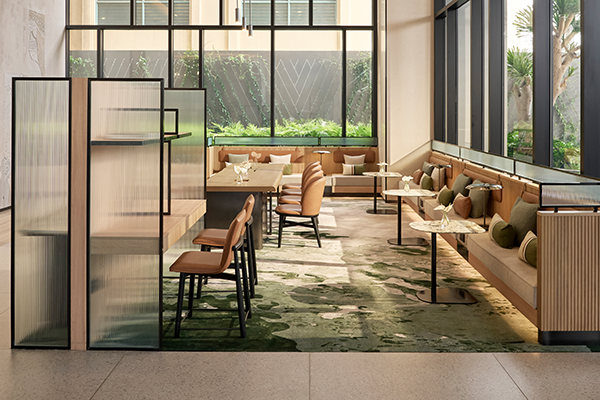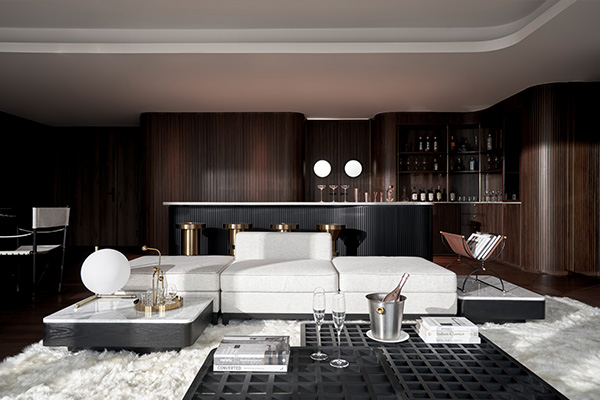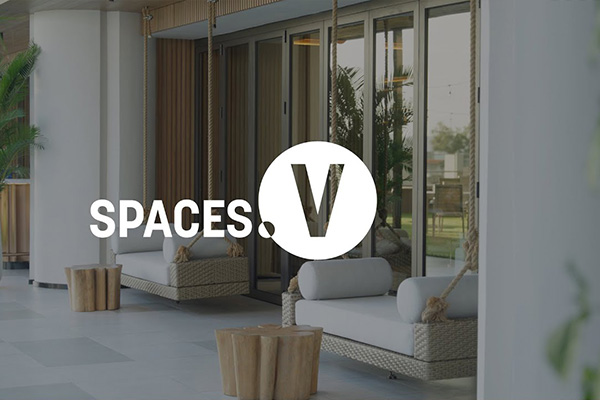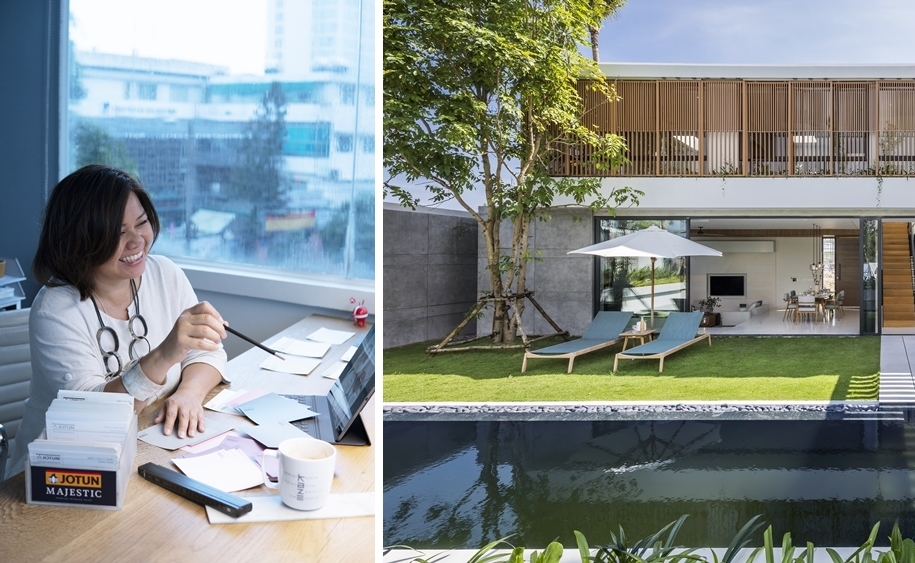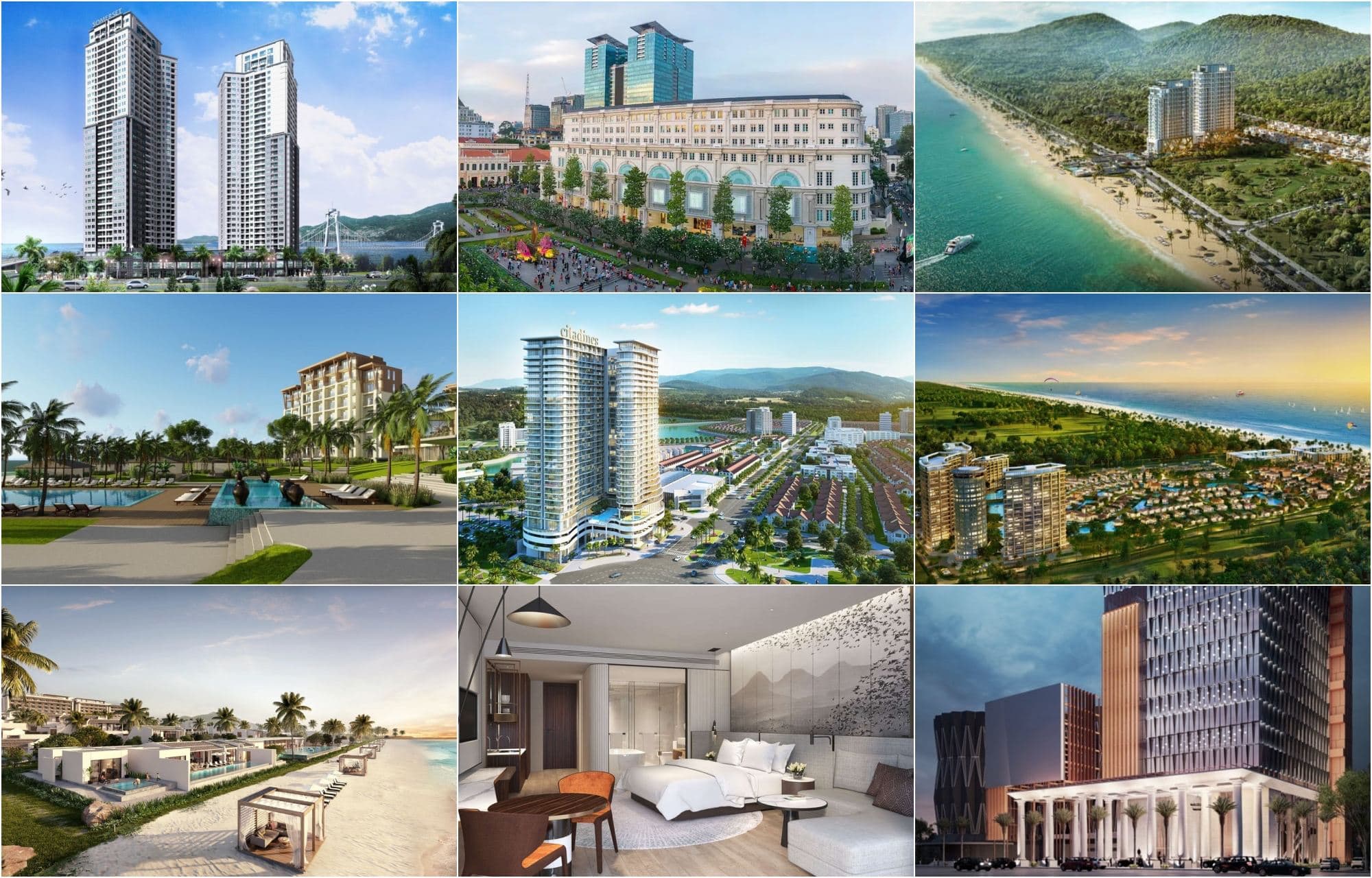KAZE & INTERIOR DESIGN FOR HIGH END HOTELS IN VIETNAM - THE UNTOLD CHALLENGES
Have you ever wondered what goes into making a high-end hotel? You might think it’s as simple as choosing some comfy pillows and shiny golden wallpapers, finding a few art pieces, some colourful and ambiguously-shaped sculptures, throwing it all together and—ta da!—luxury. But you might be shocked to know the true depth and scope of storytelling, conceptualization, and meticulous planning that goes into creating a high-end hotel, far beyond just decorating. Whether or not you realize it, everything you see and interact with as you move through one of these luxury establishments is the result of fine-tuned and precise planning.
High-end hotels need an entire team of creative professionals and experts to oversee this process from conceptualisation to final execution. This is where KAZE, a design studio based in Ho Chi Minh City, consistently delivers. KAZE means “wind” in Japanese, and this ties into their core design philosophy, which is quality in function, design and purpose—yet with a feeling as natural and free-flowing as the wind. This design philosophy is evident in the work they do for their clients all over Vietnam; a rare example of excellence, expertise, and professionalism in Vietnam’s developing market.
The team at KAZE has worked extensively with reputable international hotel brands in Vietnam, from Le Meridien to the Renaissance Hotel by Marriott, and the scope of their clientele extends beyond high-end hotels to many commercial and residential developments throughout Vietnam. Such a diversity of projects requires a wide diversity of skills and specialties within the KAZE team itself. To get an insight into exactly what goes into the fascinating process of high-end hotel design, we sat down with Managing Director Khoa, Interior Architect Hanh, and Junior Designer Phat.
From Start to Finish: The Process of Designing a High-End hotel in Vietnam
Luxury is a defining element of any high-end hotel. But what, exactly, do we mean by luxury?
“Before I studied Architecture and began working in a design studio, I thought luxury was all about design and aesthetic” KAZE’s Interior Designer Hanh says. “But now that I’ve worked on an International hotel, defining luxury in a broad sense comes with my ability to translate the branding guideline. To curate an experience for guests through architecture, landscape, art, and culture in a way that is new and original, yet aligns with the hotel’s brand and image.”
“It’s not just about the design, it’s the whole package,” Junior Designer Phat agrees. “The look, the style, and the 5-star service.”
You might think of luxury as gaudy, shiny, golden, almost excessive—but these Old Hollywood depictions of luxury are no longer the norm. These days, when you step into a high-end hotel, you’re likely to encounter more modern, minimalist artistic and design elements and cutting-edge technological solutions for the demands of 21st century hotel guests.
“I think nowadays, the definition of high-end is changing,” Khoa adds. “It’s not about material, it’s not about big space or small space. It’s about the experience, and that experience includes the rush of interacting with a new gadget or a cutting-edge technology that you’re being offered as a guest, that you might not have seen before or even knew existed.”
Think about your own experience at a hotel. If the lobby, restaurant, and public facilities were pristine and luxurious, but your room was drab, dark, and uncomfortable, would you come away from that hotel with a positive impression?
Of course you wouldn’t! Most of our time as guests is spent in the smallest, most intimate spaces in these hotels, and it is therefore in these relatively small rooms where the design team at KAZE begins their design and storytelling journey with any high-end hotel project.
“When I work on small spaces like hotel rooms, it’s very complicated because you have to go through every detail in the room,” Phat says. “Because every little detail matters in the big perspective of being a 5-star luxury hotel.”

“Space planning is the most challenging,” Hanh says. With a space as limited as a hotel room, every inch of the space must be carefully accounted for and meticulously, precisely planned. “From the brief of clients, to the space from the architecture. It’s the most difficult part.”
According to Phat, it’s actually the initial phase of high-end hotel design that proves the most difficult. “I think the first stage is quite challenging, finding the direction for the project that can run consistently to the very end. It’s crucial that we have a clear story in order to convince the operator to agree to our design.”
So how does the team at KAZE begin conceptualizing a design story for a new client? They won’t start from scratch, and in fact they’ll have an extensive brief of requirements from their client related to aesthetic, practical needs, and branding that they must take into consideration.
Could you imagine writing a book for someone who tells you what they think should happen at the end? You would then have to come up with an interesting plot and finer details like setting and character development that meet their expectations. This is the tremendous “design story” challenge KAZE faces with every new high-end hotel client.
After hours of planning and brainstorming, an initial schematic emerges from the creative minds at KAZE. But the team can only move on to the next phase if their client says “yes” to the story.
“[Creating] the schematic takes the longest,” Hanh adds. “Our client may have something specific in mind, and if our story doesn’t align with their vision, we have to go back and change the story...so that eventually it becomes the client’s story. It takes time for us to find each other, making this the costliest and most time-consuming stage of designing.”
To help their clients visualize the story, the team at KAZE actually uses modern technology to create 3D renderings to bring their concepts to life.
“There is often a perceived gap between what the client wants and what is actually possible,” Hanh says. “So it’s our job to not only create a story that aligns with the clients’ needs as closely as possible, but to convince the client that our story will result in the very best experience for their guests and for their brand reputation.”
The next phase deals with “kinetic design”—deciding exactly which materials will be used, and how they will be used. This is, in fact, their specialty.
“We can use one type of material in many different ways,” says Khoa. “And we spend a lot of time exploring how we can use this material. By pushing beyond what’s normally expected, we find a new interesting way of implementing that material to express the design.”
The process then continues through the practical application of those materials—construction, staging, and final execution, culminating in that magical moment when guests step into the hotel for the first time.
Interior Designers at KAZE: What Skills are Most Important to Develop High-end Hotels?
It takes a team of highly qualified professionals to properly take on any high-end hotel project, and each team member will bring a variety of skills to the table, but which of them is most important? Creativity? Technical skills? A sense of style?
“Different designers have different strengths,” Managing Director Khoa says. “And actually, interior design is a product of the long process of a big team with members who have different skills. One designer might have talent in creativity, but he alone cannot make the project. Other designers are very strong at technical or business management. So the whole team will make the product possible.”
“We can create, but if we don’t have knowledge and experience of the kind of project we’re doing, it’ll turn out very badly,” Hanh points out. “Interior design is never just one person’s job... it’s the team’s whole effort that matters.”
Interior design: It’s more than just decoration
We asked each team member what some of the biggest misconceptions about interior design are.
“That it’s just decoration!” says Hanh. “Even architects think interior design is a way of adding colour and cushions on top of a sofa. But we actually deal with all the details of each material selected and how we can apply it to the detailed millimeter, yet not adding to the cost. Along the way we have to compromise on our ambitions, to adjust to a budget constraints while still delivering what we promised.”
“A lot of people think that designers just do creative stuff,” Phat says. “They don’t know the level of structural knowledge, detail work, joinery work and mechanical and electrical stuff we need to know and combine to see our design come true.”
“Most clients don’t know how long it takes,” Khoa adds. “They think it can be done in 1 or 2 weeks.”
“My relatives think I’m just arranging cushions and wallpapers in a room!” Phat chuckles.
Clearly, interior design is a much more involved process that requires a broad diversity of skill sets, brainstorming, teamwork, and specialized responsiveness to the needs of each individual client. “You can’t be lazy in this field,” Hanh says. “If you don’t love what you’re doing, you’ll never manage the long hours and late nights it requires to be an Interior Architect.”
It’s a long and winding road from the start of the journey, when a client gives KAZE their initial brief, to the moment the first hotel guests immerse themselves in that experience curated by the collaborative effort of a creative and diverse design team—but it is that moment that makes those hundreds of hours of hard work, dedication, and passion worthwhile.
Article credit: City Pass Guide

